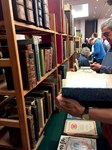
1 How did you get your start?
Every collector eventually becomes a dealer. It was the same for me. A friend of mine was dealing vintage watches and I got interested through him. I started collecting on a serious basis and then joined him dealing from Portobello Road where I remain trading today.
2 How has the market changed during the past five years?
Back then, the interest was mostly in men’s big, oversized watches – though in the world of historic watches, there are not many on that scale. Now, buyers are again looking to acquire more traditional sizes. Also, for around 20 years there was a trend for white-coloured watches, such as steel, white gold or platinum. Six or seven years ago you couldn’t shift gold watches, which were seen as old fashioned. Now, however, there is a trend for yellow or rose gold pieces.
3 What’s one factor that can seriously affect the value of a watch?
Celebrity ownership. For example, last year, Paul Newman’s Rolex Daytona sold for almost $17.8m (£13.5m) including buyer’s premium at Phillips New York. An identical watch without that provenance will sell for £250,000-300,000. That’s an extreme example but it can happen in other cases as well.
4 What is one question you regularly get from buyers?
“Is it working well?” Buyers are rightly concerned about the condition of the movement when they purchase a vintage watch. To ensure that my offerings are in good working condition I have specific watchmakers to whom I send particular models.
5 Which watch do you wear?
I wear three or four different models a week depending on my mood. And when I get a new model in I wear it for a few days before giving it to the watchmaker. It’s one of the fringe benefits of the job.
If you would like to be featured in 5 Questions, please contact francesallitt@antiquestradegazette.com














